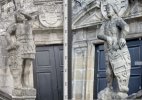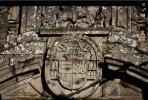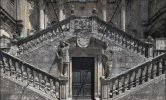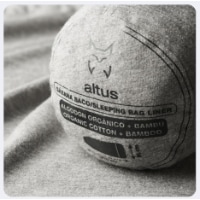Does anybody know who the statues at the bottom of the staircase from the Praza de Obradoiro to the doors of the Cathedral represent? The one on the left seems to be shielding his eyes from the sun. The one on the right seems to be awkwardly striding forwards while holding a shield close to his right leg. I have read that: The stair was made in the 17th century by Ginés Martínez and it is of Renaissance style inspired by Giacomo Vignola of Palazzo Farnese. It is diamond-shaped with two ramps that surround the entrance to the old 12th century Romanesque crypt of the Master Mateo. So there is no need for you to repeat that information.
-
 ⚠️ Emergency contact in Spain - Dial 112 and AlertCops app. More on this here.
⚠️ Emergency contact in Spain - Dial 112 and AlertCops app. More on this here. -
Remove ads on the forum by becoming a donating member. More here.
Search 69,459 Camino Questions
You are using an out of date browser. It may not display this or other websites correctly.
You should upgrade or use an alternative browser.
You should upgrade or use an alternative browser.
The focus is on reducing the risk of failure through being well prepared. 2nd ed.
- Time of past OR future Camino
- Frances, autumn/winter; 2004, 2005-2006, 2007, 2008, 2009, 2010, 2011, 2012, 2013, 2014, 2015
"The impressive two staircases going up to the Portico de la Gloria date from the middle of the 17th century. There you will find the two Romanesque statues of the Maestro Mateo school of King David and King Solomon."
Cited in this source
Edited.
Mea culpa. These are not the statues Bert45 questioned.
Cited in this source
Edited.
Mea culpa. These are not the statues Bert45 questioned.
Last edited:
- Time of past OR future Camino
- To Santiago and back. Le Puy to Aumont-Aubrac.
Ideal sleeping bag liner whether we want to add a thermal plus to our bag, or if we want to use it alone to sleep in shelters or hostels. Thanks to its mummy shape, it adapts perfectly to our body.
€46,-
€46,-
- Time of past OR future Camino
- To Santiago and back. Le Puy to Aumont-Aubrac.
The one on the left seems to be shielding his eyes from the sun. The one on the right seems to be awkwardly striding forwards while holding a shield close to his right leg
Here's a closeup. Their outfit reminds me of Roman soldiers and what they are holding appears to be something that can be rolled up, so not shields although apparently coat of arms.

Last edited:
- Time of past OR future Camino
- 2016, 2022, 2023, 2024, planned 2025
Looks like the same shield on both.
- Time of past OR future Camino
- To Santiago and back. Le Puy to Aumont-Aubrac.
... the sun or some miraculously bright light in the night sky or some other kind of apparition in the sky ...he one on the left seems to be shielding his eyes from the sun
Last edited:
...and ship it to Santiago for storage. You pick it up once in Santiago. Service offered by Casa Ivar (we use DHL for transportation).
The statues are remarkably crude, don't you think? They've had a fair bit of wear and tear from the weather, but I don't think that they were works of art in the first place. I can see the likeness to Roman soldiers from the 'skirt' of the one on the left and their greaves. But neither has a helmet and they both have beards. Roman soldiers are usually depicted clean-shaven. I'll see if I can get an answer from the cathedral authorities.Here's a closeup. Their outfit reminds me of Roman soldiers and what they are holding appears to be something that can be rolled up, so not shields although apparently coat of arms.
View attachment 137509
- Time of past OR future Camino
- To Santiago and back. Le Puy to Aumont-Aubrac.
I now wonder whether the two statues represent the same person. Ramiro I? Clavijo? A generic soldier? The statue on the right appears to be holding a sword.
I can't figure out what the second item in the coat of arms is. If it were a castle, it would be the coat of arms of Castilla y Leon: 2 lions and 2 castles. The same coat of arms can also be seen above the door.
I can't figure out what the second item in the coat of arms is. If it were a castle, it would be the coat of arms of Castilla y Leon: 2 lions and 2 castles. The same coat of arms can also be seen above the door.
- Time of past OR future Camino
- To Santiago and back. Le Puy to Aumont-Aubrac.
Nobody asked about it but I am going to say it nevertheless  : it is, or at least once was, the coat of arms of the archbishop or archbishopric of Compostela which is why the text along the border starts with archiepiscopus compostelanus.. Above it is yet another Santiago Matamoros (or Mataturcos?) scene.
: it is, or at least once was, the coat of arms of the archbishop or archbishopric of Compostela which is why the text along the border starts with archiepiscopus compostelanus.. Above it is yet another Santiago Matamoros (or Mataturcos?) scene.
The architect mentioned in the first post, Gines Martinez, was a protégée of archbishop Maximilian whose coat of arms it is.
For a better image see here: Escudo heráldico del Arzobispo Maximiliano de Austria, https://commons.wikimedia.org/wiki/File:Maximiliano-de-austria-arzobispo-escudo.jpg

The architect mentioned in the first post, Gines Martinez, was a protégée of archbishop Maximilian whose coat of arms it is.
For a better image see here: Escudo heráldico del Arzobispo Maximiliano de Austria, https://commons.wikimedia.org/wiki/File:Maximiliano-de-austria-arzobispo-escudo.jpg

Last edited:
The focus is on reducing the risk of failure through being well prepared. 2nd ed.
- Time of past OR future Camino
- To Santiago and back. Le Puy to Aumont-Aubrac.
I thought that Maximilian of Austria was an odd name for the archbishop of Compostela during whose tenure the Obradoiro staircase of the cathedral was built and, presumably, the two statues were created and placed there.
Wikipedia says that this archbishop was born in Spain as illegitimate son of Leopold of Austria. Leopold was himself a bishop in Spain and had been born in Austria as an also illegitimate son of Maximilian I, Holy Roman Emperor. Being an illegitimate son of a leading member of aristocracy or clergy and receiving a good education and embarking on a promising career as ordained clergy was nothing unusual in those days.
Quite a family history. Maximilian I was one of the biggies among the Habsburg emperors who reigned over a huge swath of territory in Europe that included Spain, Belgium, Netherlands, Germany, Austria, Hungary and more, and he waged of course numerous wars in various parts of Europe throughout his lifetime. So he was the grandfather of our archbishop in Santiago de Compostela.
This was of course the time of the Turkish Wars, the long-lasting military conflict between the Ottoman Empire and European countries. Who hasn't heard of the attacks on Vienna in particular. One of many reasons why the imagery of a military Saint James in combat spirit became so popular during this time, 700 years or so after the century when the legend of Clavijo supposedly had taken place where Saint James appeared in a dream and/or in the sky to encourage the king and his army who had prayed for his assistance before a battle.
I am not a history buff and it was only on my way to Santiago that I started to develop in interest in what these supposedly silent old stones are telling us. They are fascinating stories sometimes that you won't find in your Brierley.
Wikipedia says that this archbishop was born in Spain as illegitimate son of Leopold of Austria. Leopold was himself a bishop in Spain and had been born in Austria as an also illegitimate son of Maximilian I, Holy Roman Emperor. Being an illegitimate son of a leading member of aristocracy or clergy and receiving a good education and embarking on a promising career as ordained clergy was nothing unusual in those days.
Quite a family history. Maximilian I was one of the biggies among the Habsburg emperors who reigned over a huge swath of territory in Europe that included Spain, Belgium, Netherlands, Germany, Austria, Hungary and more, and he waged of course numerous wars in various parts of Europe throughout his lifetime. So he was the grandfather of our archbishop in Santiago de Compostela.
This was of course the time of the Turkish Wars, the long-lasting military conflict between the Ottoman Empire and European countries. Who hasn't heard of the attacks on Vienna in particular. One of many reasons why the imagery of a military Saint James in combat spirit became so popular during this time, 700 years or so after the century when the legend of Clavijo supposedly had taken place where Saint James appeared in a dream and/or in the sky to encourage the king and his army who had prayed for his assistance before a battle.
I am not a history buff and it was only on my way to Santiago that I started to develop in interest in what these supposedly silent old stones are telling us. They are fascinating stories sometimes that you won't find in your Brierley.
Last edited:
sillydoll
Veteran Member
- Time of past OR future Camino
- 2002 CF: 2004 from Paris: 2006 VF: 2007 CF: 2009 Aragones, Ingles, Finisterre: 2011 X 2 on CF: 2013 'Caracoles': 2014 CF and Ingles 'Caracoles":2015 Logrono-Burgos (Hospitalero San Anton): 2016 La Douay to Aosta/San Gimignano to Rome:
Anne Born wrote an award winning book on the Santiago Cathedral. I've asked her if she can answer your question. 
- Time of past OR future Camino
- To Santiago and back. Le Puy to Aumont-Aubrac.
I'll see if I can get an answer from the cathedral authorities.
Anne Born wrote an award winning book on the Santiago Cathedral. I've asked her if she can answer your question.
I was reminded of this thread from two years ago. Did any of you - @Bert45 and @sillydoll - get a reply concerning the "statues at the bottom of the staircase" and if so would you like to share it?
Ideal sleeping bag liner whether we want to add a thermal plus to our bag, or if we want to use it alone to sleep in shelters or hostels. Thanks to its mummy shape, it adapts perfectly to our body.
€46,-
€46,-
I didn't get an answer from the Cathedral, I send my questions in Spanish (translated by Google) first followed by the English, in case the GT does not make sense, though I know enough Spanish to spot any obvious errors or misunderstandings. I shall try again, thanks for the reminder.I was reminded of this thread from two years ago. Did any of you - @Bert45 and @sillydoll - get a reply concerning the "statues at the bottom of the staircase" and if so would you like to share it?
I have had a reply from administracion@catedraldesantiago.es.
They replied (in Spanish, even though I asked the questions in gallego and English): We would appreciate it if you made this inquiry to the following email address: museo@catedraldesantiago.es
Would it have killed whoever replied to have forwarded my questions to the museo him/her-self?
They replied (in Spanish, even though I asked the questions in gallego and English): We would appreciate it if you made this inquiry to the following email address: museo@catedraldesantiago.es
Would it have killed whoever replied to have forwarded my questions to the museo him/her-self?
- Time of past OR future Camino
- Most years since 2012
They probably want to stay off the rest of the email chain, as people are inclined to "Reply all" and they would have been included. Is it really too much to ask you to take the extra step, since it is your request?Would it have killed whoever replied to have forwarded my questions to the museo him/her-self?
The focus is on reducing the risk of failure through being well prepared. 2nd ed.
That's reasonable, too. I have done that. I just think the writer could have done it and cut out one step.They probably want to stay off the rest of the email chain, as people are inclined to "Reply all" and they would have been included. Is it really too much to ask you to take the extra step, since it is your request?
I don't understand the 'Reply all' reference. There would be just me and the writer to reply to. And the writer might have been interested to know the answers to my questions.
- Time of past OR future Camino
- Most years since 2012
If they were interested, they could have forwarded the email. But since it is an administrative email address, they likely get many emails daily. I have been the recipient of many office emails that grow and mutate with the "Reply All" instead of the "Reply" feature, until they become monsters! They really want you to go to the right source without being involved further.There would be just me and the writer to reply to. And the writer might have been interested to know the answers to my questions.
I have had an answer from the museo address:
As dúas figuras obxecto da súa consulta, as situadas a ambos os lados da porta que leva á Cripta do Pórtico da Gloria, no tramo interno da dobre escaleira, forman parte do proxecto do arquitecto Ginés Martínez quen, nos primeiros anos do século XVII levouno a cabo de acordo co encargo recibido do arcebispo Maximiliano de Austria, quen o trouxo a traballar a Compostela. Representan dous guerreiros que portan candanseu escudo e que, en certo modo, escoltan e enmarcan non só a porta de entrada á chamada Catedral Vella, senón tamén o escudo de armas do propio arcebispo situado sobre a porta.
Son dúas pezas pouco estudadas e tratadas, a pesar da súa destacada localización no conxunto actual do Obradoiro. Foron vistas (como sinalou na súa tese doutoural María Elena Cortés) como posibles referencias ao pasado guerreiro do propio prelado compostelán. Non teñen, polo tanto, identificación concreta nin parecen ser personaxes históricos, máis ben son elementos simbólicos de tipo alegórico no conxunto da escalinata. De feito, non era raro que guerreiros pétreos estiveran situados nos accesos e arranques de escalinatas, como sucedeu, na propia catedral, tempo antes, no caso da Torre do arcebispo Gómez Manrique, no claustro medieval, que tamén estaba flanqueada por dúas figuras de guerreiros con escudos.
GT says:
"The two figures that are the subject of your query, the ones located on either side of the door that leads to the Crypt of the Pórtico da Gloria, in the internal section of the double staircase, are part of the project of the architect Ginés Martínez who, in the early years of the 17th century, took it to done in accordance with the commission received from Archbishop Maximiliano of Austria, who brought him to work in Compostela. They represent two warriors carrying a Canadian shield and which, in a way, escort and frame not only the entrance door to the so-called Old Cathedral, but also the coat of arms of the archbishop himself located above the door.They are two pieces that have been little studied and treated, despite their outstanding location in the current set of the Workshop. They were seen (as María Elena Cortés pointed out in her doctoral thesis) as possible references to the warrior past of the Compostela prelate himself. They do not, therefore, have a specific identification nor do they seem to be historical figures, rather they are symbolic elements of an allegorical type in the staircase as a whole. In fact, it was not uncommon for stone warriors to be located at the entrances and beginnings of staircases, as happened, in the cathedral itself, some time before, in the case of the Tower of Archbishop Gómez Manrique, in the medieval cloister, which was also flanked by two figures of warriors with shields."
I suspect that 'Canadian' might not be the correct translation of 'candanseu'. I have it on good authority that 'candanseu' is a typo for 'cadanseu', and so the translation is: "They represent two warriors who each carry a shield ...
As dúas figuras obxecto da súa consulta, as situadas a ambos os lados da porta que leva á Cripta do Pórtico da Gloria, no tramo interno da dobre escaleira, forman parte do proxecto do arquitecto Ginés Martínez quen, nos primeiros anos do século XVII levouno a cabo de acordo co encargo recibido do arcebispo Maximiliano de Austria, quen o trouxo a traballar a Compostela. Representan dous guerreiros que portan candanseu escudo e que, en certo modo, escoltan e enmarcan non só a porta de entrada á chamada Catedral Vella, senón tamén o escudo de armas do propio arcebispo situado sobre a porta.
Son dúas pezas pouco estudadas e tratadas, a pesar da súa destacada localización no conxunto actual do Obradoiro. Foron vistas (como sinalou na súa tese doutoural María Elena Cortés) como posibles referencias ao pasado guerreiro do propio prelado compostelán. Non teñen, polo tanto, identificación concreta nin parecen ser personaxes históricos, máis ben son elementos simbólicos de tipo alegórico no conxunto da escalinata. De feito, non era raro que guerreiros pétreos estiveran situados nos accesos e arranques de escalinatas, como sucedeu, na propia catedral, tempo antes, no caso da Torre do arcebispo Gómez Manrique, no claustro medieval, que tamén estaba flanqueada por dúas figuras de guerreiros con escudos.
GT says:
"The two figures that are the subject of your query, the ones located on either side of the door that leads to the Crypt of the Pórtico da Gloria, in the internal section of the double staircase, are part of the project of the architect Ginés Martínez who, in the early years of the 17th century, took it to done in accordance with the commission received from Archbishop Maximiliano of Austria, who brought him to work in Compostela. They represent two warriors carrying a Canadian shield and which, in a way, escort and frame not only the entrance door to the so-called Old Cathedral, but also the coat of arms of the archbishop himself located above the door.They are two pieces that have been little studied and treated, despite their outstanding location in the current set of the Workshop. They were seen (as María Elena Cortés pointed out in her doctoral thesis) as possible references to the warrior past of the Compostela prelate himself. They do not, therefore, have a specific identification nor do they seem to be historical figures, rather they are symbolic elements of an allegorical type in the staircase as a whole. In fact, it was not uncommon for stone warriors to be located at the entrances and beginnings of staircases, as happened, in the cathedral itself, some time before, in the case of the Tower of Archbishop Gómez Manrique, in the medieval cloister, which was also flanked by two figures of warriors with shields."
I suspect that 'Canadian' might not be the correct translation of 'candanseu'. I have it on good authority that 'candanseu' is a typo for 'cadanseu', and so the translation is: "They represent two warriors who each carry a shield ...
Perfect memento/gift in a presentation box. Engraving available, 25 character max.
❓How to ask a question
How to post a new question on the Camino Forum.
Most read last week in this forum
Similar threads
❓How to ask a question
How to post a new question on the Camino Forum.
Similar threads
-
-
Pilgrim’s mass at Santiago cathedral
- Started by jsanwe
- Replies: 16
-
Most downloaded Resources
-
“All” Albergues on the Camino Frances in one pdf“All” Albergues on the Camino Frances in one pdf
- ivar
- Updated:
-
A selection of favorite albergues on the Camino FrancésFavorite Albergues along the Camino Frances
- Ton van Tilburg
- Updated:
-
Profile maps of all 34 stages of the Camino FrancesProfile maps of all 34 stages of the Camino Frances
- ivar
- Updated:















